The departure from our Malaysian beach hotel was an example of a good travel day: plenty of time for a poolside breakfast, a smooth check-out, and a relaxed taxi ride to the airport for a late morning flight. Destination: Indonesia. But even good travel days can have snags along the way. To prove that point, our arrival in Yogyakarta was met with some speed bumps. The first, a tiny bump due to our lack of in-depth research, was the requirement for a special entry visa. 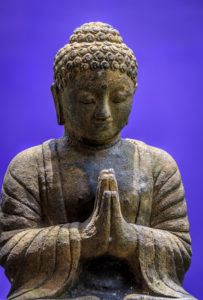 It appears we did not required one for our 29-day stay. Thinking we did, we queued for several minutes in the visa application line. Once the kind officer clear up our misunderstanding, we joined the other ever-growing line of arriving visitors through customs and immigration. After that delay, we picked up our luggage and left the arrivals gate. We were approached – insistently-on-the-cusp-of-harassingly – by local taxi drivers offering rides to our downtown villa. But we kept refusing. We were ordering our much cheaper Grab cab. However, despite Grab drivers accepting our requests and appearing to be on their way, they would ultimately cancel the booking. We had read about the “taxi mafia” in Indonesia, and now we seemed to be affected by it. After a very frustrating hour, we returned to the airport taxi office to negotiate the drive to our Airbnb villa, talking them down from 500,000 rupiahs to 100K – when Grab would have cost half that. We finally arrived at our villa almost two hours later than our expected arrival. Too late for the settle-in routine; that would have to wait until the next day.
It appears we did not required one for our 29-day stay. Thinking we did, we queued for several minutes in the visa application line. Once the kind officer clear up our misunderstanding, we joined the other ever-growing line of arriving visitors through customs and immigration. After that delay, we picked up our luggage and left the arrivals gate. We were approached – insistently-on-the-cusp-of-harassingly – by local taxi drivers offering rides to our downtown villa. But we kept refusing. We were ordering our much cheaper Grab cab. However, despite Grab drivers accepting our requests and appearing to be on their way, they would ultimately cancel the booking. We had read about the “taxi mafia” in Indonesia, and now we seemed to be affected by it. After a very frustrating hour, we returned to the airport taxi office to negotiate the drive to our Airbnb villa, talking them down from 500,000 rupiahs to 100K – when Grab would have cost half that. We finally arrived at our villa almost two hours later than our expected arrival. Too late for the settle-in routine; that would have to wait until the next day.
Yogyakarta (Jogja, to locals) had been recommended by our friend Lien T.; but, it wasn’t until we saw images of Borobudur Temple that our decision to go was settled. We booked a private sunrise tour, remembering the almost magical experience of Angkor Wat (previous post). Our guide, Tulus, and his driver arrived at 3:30 AM to begin the day’s journey. On the way, we noticed the streets were curiously filled with motorcycles; odd, for so early in the morning. Tulus informed us that Indonesians formed all sorts of social clubs, including ones based on makes and models of motorcycles; and these clubs organized gatherings. This was a thing, and we were going to be part of it – like it or not. As we reached the area of Borobudur, there were hundreds of Yamaha RX Kings on the streets, in parks, alongside and under bridges. And it was 5:30 AM! By the time we left the temple, the Yamaha gathering was causing major traffic congestion in the area.
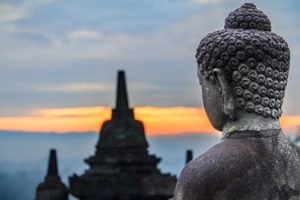 Borobudur is a 9th-century Buddhist temple, 45 kilometres north-west of Yogyakarta. With purchased tickets in hand, we walked in the dark, along stone paths and up steep temple stairs to the top – along with 50 or so other visitors. We positioned ourselves for a good view of the nearing sunrise, with late-comers scrambling with leftover spots. Some had climbed the temple to perform their sunrise meditation, heightening our exotic experience. Once the sun was well above the horizon, most visitors descended the temple, giving us almost exclusive access. As we admired the structure, Tulus explained the meanings of the different statues and stone reliefs. The monument satisfactorily viewed and photographed, we drove off toward two smaller temples having a ritual relationship to Borobudur: Pawon and Mendut.
Borobudur is a 9th-century Buddhist temple, 45 kilometres north-west of Yogyakarta. With purchased tickets in hand, we walked in the dark, along stone paths and up steep temple stairs to the top – along with 50 or so other visitors. We positioned ourselves for a good view of the nearing sunrise, with late-comers scrambling with leftover spots. Some had climbed the temple to perform their sunrise meditation, heightening our exotic experience. Once the sun was well above the horizon, most visitors descended the temple, giving us almost exclusive access. As we admired the structure, Tulus explained the meanings of the different statues and stone reliefs. The monument satisfactorily viewed and photographed, we drove off toward two smaller temples having a ritual relationship to Borobudur: Pawon and Mendut.
Part of that morning’s tour included a horse-drawn carriage ride with a local guide through the Javanese tourist village of Candirejo. Along dirt-packed village streets, we visited a cassava cracker maker’s home and shop, a community centre where local children are taught to play traditional musical instruments – these Canadian “kids” also plucked out a few traditional melodies. We ended the village tour at a local crop field and welcome centre, where we enjoyed a cup of freshly made tea with our local guide. Back on the road with Tulus, we drove to Pawon Luwak Coffee where staff described the making of kopi luwak (or civet coffee) and 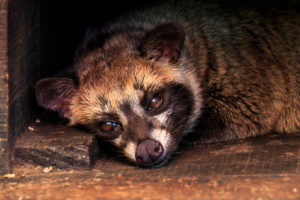 offered us a complimentary cup of the expensive brew. After a brief lunch stop, we crossed north Jogja toward the east, to our last major site of the day. Prambanan is a large 9th-century Hindu temple complex, consisting of three main temples dedicated to Shiva, Vishnu, and Brahma; there are also three temples dedicated to the vahana of each god. In late afternoon, tired from 12 hours of driving and exploring, we headed to our villa for an early night. We had booked a two-day tour with Tulus, and had to be fresh for the next day.
offered us a complimentary cup of the expensive brew. After a brief lunch stop, we crossed north Jogja toward the east, to our last major site of the day. Prambanan is a large 9th-century Hindu temple complex, consisting of three main temples dedicated to Shiva, Vishnu, and Brahma; there are also three temples dedicated to the vahana of each god. In late afternoon, tired from 12 hours of driving and exploring, we headed to our villa for an early night. We had booked a two-day tour with Tulus, and had to be fresh for the next day.
At 7:00 AM sharp, Tulus and his driver arrived to begin a three and a half hour drive toward the western slope of Mount Lawu to visit two 15th-century Javanese-Hindu temples: Candi Sukuh, dedicated to birth and new life, and Candi Ceto. High up in the mountains, both temples provided an impressive view of the landscape below. While at Ceto, dark clouds reached over Mount Lawu and rumblings of thunder grew louder. We scurried back to the van avoiding the pending downpour.
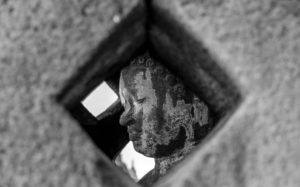 That morning, with no time to prepare our breakfast brew and with such a long road ahead of us, we requested a short coffee-break. Tulus agreed and, after quite some driving, our driver stopped at an elegant café called The Tea House. As the name stated, coffee was not on the menu. Tulus asked if we wanted to go elsewhere, we said yes, and so we drove off to see temples. “Too bad”, we thought, “it looked like a nice place”. We later realized that the “coffee stop” had been part of the day’s tour – a tea plantation. It appears, when we asked to go elsewhere, Tulus interpreted the request as “we are not interested in tea plantations”, as opposed to our true meaning of “we need a good jolt of caffeine, ASAP!” – too bad, it looked like a nice place. Despite the interesting temples and the amazing mountain views, the second day of our tour was not worth seven hours in a van. And a tea plantation visit would not have tipped the scale.
That morning, with no time to prepare our breakfast brew and with such a long road ahead of us, we requested a short coffee-break. Tulus agreed and, after quite some driving, our driver stopped at an elegant café called The Tea House. As the name stated, coffee was not on the menu. Tulus asked if we wanted to go elsewhere, we said yes, and so we drove off to see temples. “Too bad”, we thought, “it looked like a nice place”. We later realized that the “coffee stop” had been part of the day’s tour – a tea plantation. It appears, when we asked to go elsewhere, Tulus interpreted the request as “we are not interested in tea plantations”, as opposed to our true meaning of “we need a good jolt of caffeine, ASAP!” – too bad, it looked like a nice place. Despite the interesting temples and the amazing mountain views, the second day of our tour was not worth seven hours in a van. And a tea plantation visit would not have tipped the scale.
We spent the next morning and early afternoon enjoying the villa pool. We would have lazed longer, but we had booked an evening street food tour with Backstreet Academy. This was truly our week of tours! Our guide, Rama, was a new graduate of economics with a focus on tourism. His enthusiasm in describing and showing us Jogja life and culture was infectious. He met us at the first food stop, Gudeg Yu Djum for its famous Gudeg (unripe jack fruit stewed in palm sugar and coconut milk). Next, we walked toward the Sultan’s Palace, along the Alun-Alun Lor (a grassy square) to Bakmi Pak Pele for some Bakmi Godog (Boiled Noodles), Bakmi Goreng (Fried Noodles), Ronde (ginger flavoured drink) and Es Tape Ketan (iced sticky rice drink) – some items tastier than others. 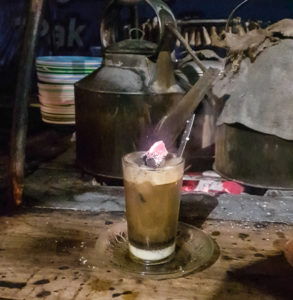 Already feeling full, we continued our walk to Jalan Malioboro, a major shopping street that comes alive in the evenings with musicians, food stalls, and lots of strolling locals. Along Malioboro and its side-streets, we made three stops: we had traditional snacks of Klepon (green coloured balls of rice cake filled with liquid palm sugar and coated in grated coconut), Putu (cylindrical-
Already feeling full, we continued our walk to Jalan Malioboro, a major shopping street that comes alive in the evenings with musicians, food stalls, and lots of strolling locals. Along Malioboro and its side-streets, we made three stops: we had traditional snacks of Klepon (green coloured balls of rice cake filled with liquid palm sugar and coated in grated coconut), Putu (cylindrical-
Still feeling Rama’s enthusiasm for Jogja, we spent our last full day independently exploring nearby historical sites. 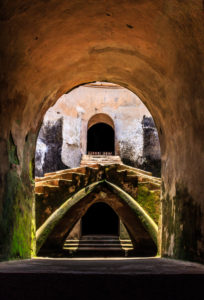 From our villa it was an easy walk to the Taman Sari Water Castle, a former 18th-century royal garden of the Sultan of Yogyakarta. The garden is part of a larger complex that has since been appropriated by local artists and artisans, and turned into another designated Indonesian tourist village. It is among these artisan shops that we discovered Voice of Jogja, a home t-shirt industry with original designs inspired by Jogja, Javanese, and Indonesian cultures. After purchasing a few of their t-shirts, we set out to find the underground mosque. With the help of many locals, along the maze-like alleys and bridges, we came upon an unassuming staircase down to an underground tunnel. This passage is the only entrance to Sumur Gumuling (or Gumuling Well), a round one-story building – but mostly underground – that once served as a mosque. Satisfied with our morning’s journey, we stopped at Lotus Mio café for lunch and a refreshing pineapple smoothie. Both Lotus Mio and Move On cafés were great spots to enjoy delicious coffee or juices and watch local life pass by.
From our villa it was an easy walk to the Taman Sari Water Castle, a former 18th-century royal garden of the Sultan of Yogyakarta. The garden is part of a larger complex that has since been appropriated by local artists and artisans, and turned into another designated Indonesian tourist village. It is among these artisan shops that we discovered Voice of Jogja, a home t-shirt industry with original designs inspired by Jogja, Javanese, and Indonesian cultures. After purchasing a few of their t-shirts, we set out to find the underground mosque. With the help of many locals, along the maze-like alleys and bridges, we came upon an unassuming staircase down to an underground tunnel. This passage is the only entrance to Sumur Gumuling (or Gumuling Well), a round one-story building – but mostly underground – that once served as a mosque. Satisfied with our morning’s journey, we stopped at Lotus Mio café for lunch and a refreshing pineapple smoothie. Both Lotus Mio and Move On cafés were great spots to enjoy delicious coffee or juices and watch local life pass by.
The next day, after checking out of our Airbnb villa, we returned to the nearby Lotus Mio for an early lunch before ordering our Grab Cab taxi to the airport – no issues that time. We were off to our last destination of this journey: Bali, Indonesia.

